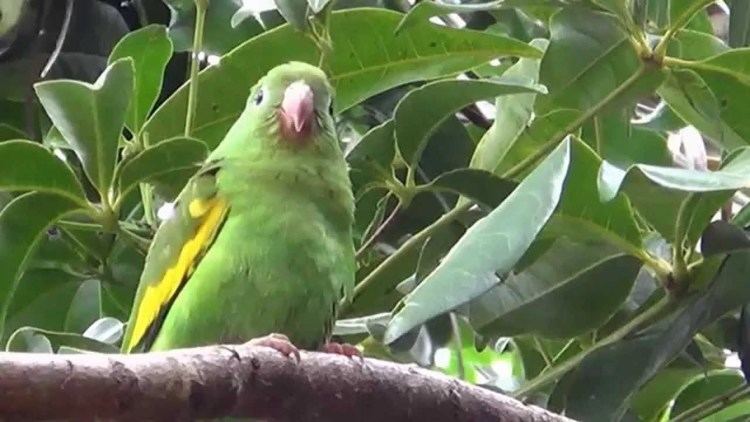Phylum Chordata Rank Species | Superfamily Psittacoidea Subfamily Arinae Scientific name Brotogeris chiriri Higher classification Brotogeris Order Parrot | |
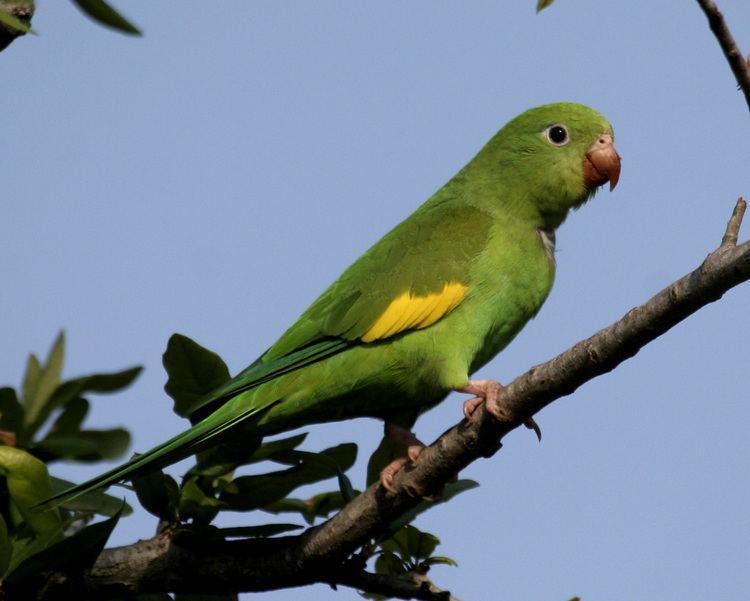 | ||
Similar Brotogeris, Bird, Parrot, White‑winged parakeet, Plain parakeet | ||
Yellow chevroned parakeet eating coconut brazilian fauna
The yellow-chevroned parakeet (Brotogeris chiriri) also known as the canary-winged parakeet, common names bee bee or pocket parrot, is native to tropical South America south of the Amazon River basin from central Brazil to southern Bolivia, Paraguay and northern Argentina. Caged birds have been released in some areas and the birds have established self-sustaining populations in the Los Angeles, San Francisco, California and Miami, Florida areas of the United States. This bird seems to be doing better in its North American feral population than its closely related cousin, the white-winged parakeet. The species is also fairily established in the downtown area of Rio de Janeiro, Brazil, where it was introduced. The native population in South America continues to do well.
Contents
- Yellow chevroned parakeet eating coconut brazilian fauna
- Yellow chevroned parakeet brotogeris chiriri wild birds
- Description
- Diet
- References
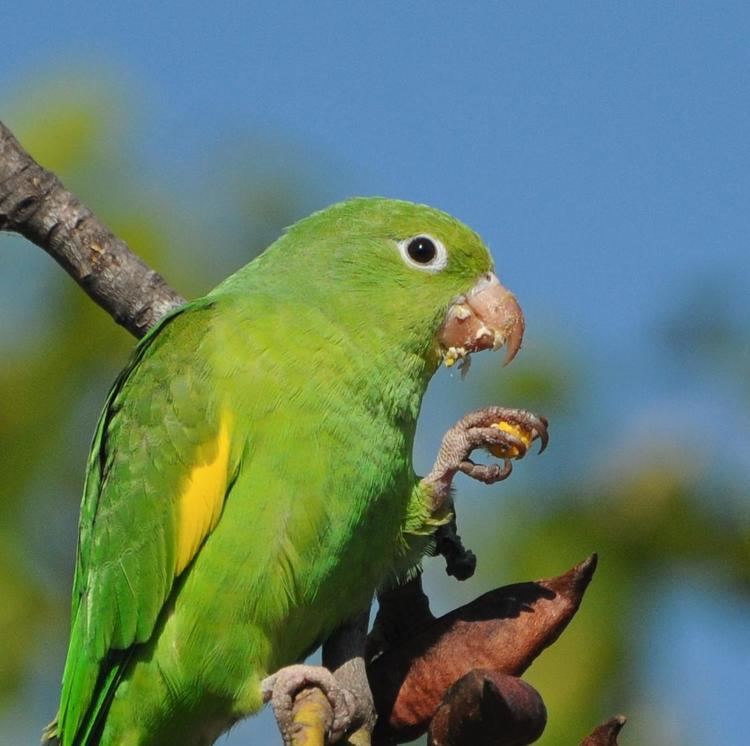
Yellow chevroned parakeet brotogeris chiriri wild birds
Description
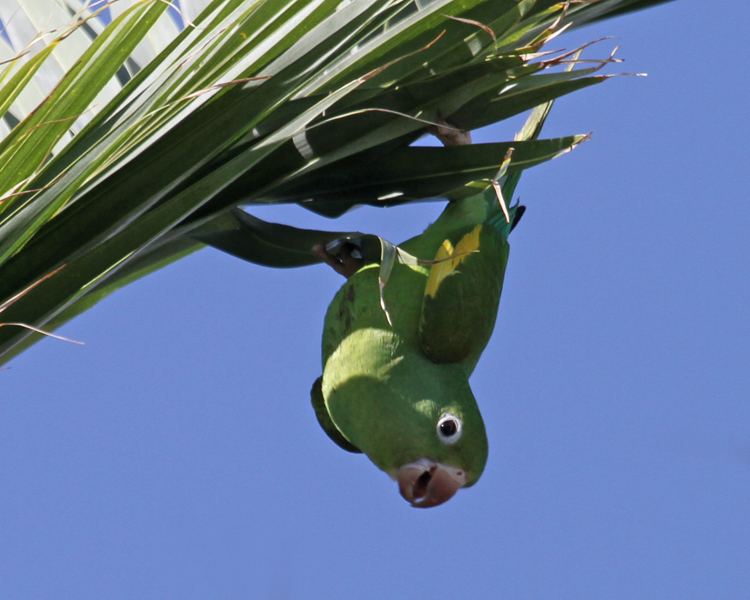
The bird is 20–25 cm in length, and is mostly light green in color. It has a trailing yellow edge on its folded wings and is also seen when the bird is in flight. It is closely related to the white-winged parakeet. In fact, it was considered conspecific until 1997.
Diet

The bird feeds mostly on seeds and fruit in its native habitat, and feral populations have adapted to take in blossoms and nectar. Feral birds will also come to bird feeders. Wild birds primarily use disturbed forest and forest clearings around settlements. It rarely uses deep tropical forest.
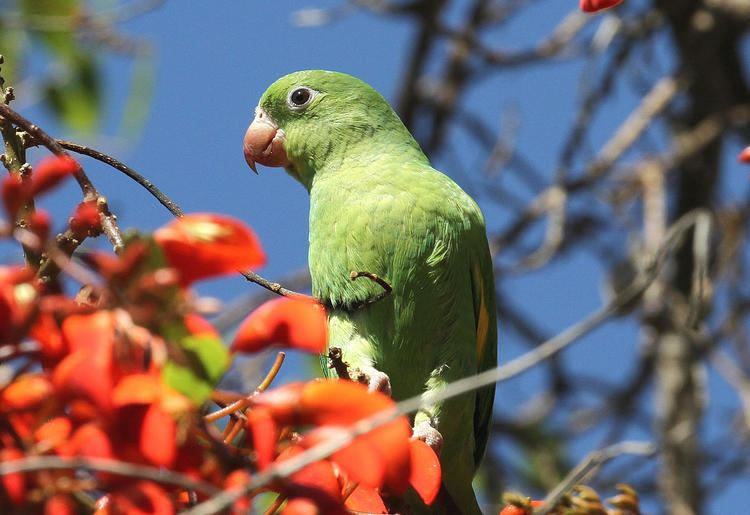
Yellow-chevroned parakeets usually find holes in trees to nest in. They will also form nesting tunnels in dead palm fronds. It lays 4-5 eggs. After raising its young, all birds will form rather large communal roosts until the next breeding season.
